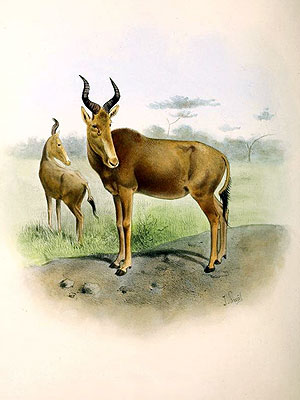North African Hartebeest (Alcelaphus buselaphus ssp. buselaphus)
The North African Hartebeest [which is a monotypic species in my opinion] was once widely distributed all over northern Africa, including Egypt, Algeria, Jordan, Libya, and Morocco, and occurred probably also in Palestine and some parts of Saudi Arabia.
The animal reached a shoulder height of up to 1,5 m.
The North African Hartebeest was already well known to the ancient Egyptians and the Romans and can be found depicted Roman mosaics.
The species begun to disappear during the second half of the 19th century – due to direct hunting, especially during the French conquest of Algeria between 1830 and 1847, when thousands of the antelopes were killed by French soldiers just for amusement.
The last known individual was shot in the year 1925 in Morocco.
***
Yet, the species may have survived in the wild for a longer time than previously known – some bones, found 1998 in the Dakhla Oasis in Egypt inside of an abandoned hyena burrow could be dated to about 1960.
*********************
References:
[1] A. J. Mills: Report presented to the Supreme Council of Antiquities, Egypt, on the 2000 Season of the Dakhleh Oasis Projekt. Dakhleh Oasis Project SCA Report: 1999/2000 Season
*********************

(not in copyright)
*********************
edited: 23.09.2017
